Product Design
KS5
Product Design – A-Level Qualification
Examining Body:
AQA
Entry Criteria:
Ideally Grade 5 GCSE Design and Technology plus Grade 4 English and Mathematics. Applicants not meeting these criteria may be accepted after interview
Course Leader:
Mr M Curtis
Why? :
This subject is suitable for anyone who enjoys the creative problem solving process, whether viewed from a scientific or arts based background, applied within 3D Product Design. Students will develop a range of strategies for creating, developing and realising their design ideas and will have the opportunity to work with a variety of materials and equipment, including CAD / CAM, in the manufacture of products. Students will take an in depth look at the work of influential designers and historical design styles as well as the commercial side of the present day industry. Knowledge and understanding of design, materials and manufacturing processes will be developed through theoretical and practical activities including product analysis, focused skill tasks and design assignments. The course will develop students’ ICT skills including the use of computer aided design and manufacture (CAD / CAM). Options for progression include: architecture, industrial product design, engineering, transport design, furniture and jewellery design.
Course Structure:
Assessment in A level Product Design comprises of a non-examined unit (NEA) worth 50% and two written examinations:
Paper 1: Technical Principles (30%)
Paper 2: Designing & Making Principles (20%) all of which are summatively assessed in the summer of Year 13.
The NEA comprises of a significant student-directed design and make assignment in which candidates undertake the role of a professional designer to solve a design problem. Applying knowledge and skills developed earlier in the course students explore their chosen design problem, recording this journey in a portfolio and culminating in the manufacture of a fully marketable product for an identified client or market. Through theoretical lessons and practical explorations candidates will develop a broad understanding of the way materials can be shaped and formed in both a workshop and industry to manufacture products. The application of this knowledge will be assessed in Paper 1. In Paper 2 candidates will explore the wider relationships between product design and manufacture and society, including design history, human factors, sustainable design and issues relating to consumer safety.
Extended Learning:
Students will be expected to keep up to date with current design related issues in the media and to dedicate themselves to completing the NEA and given assignments. There will also be a number of field trips and industrial case studies.






